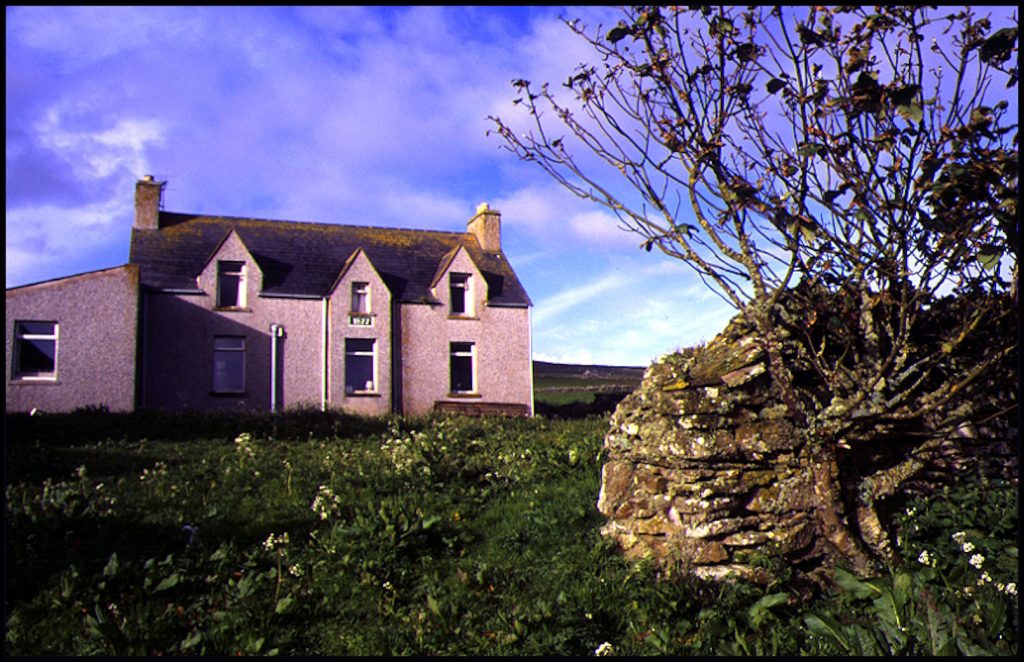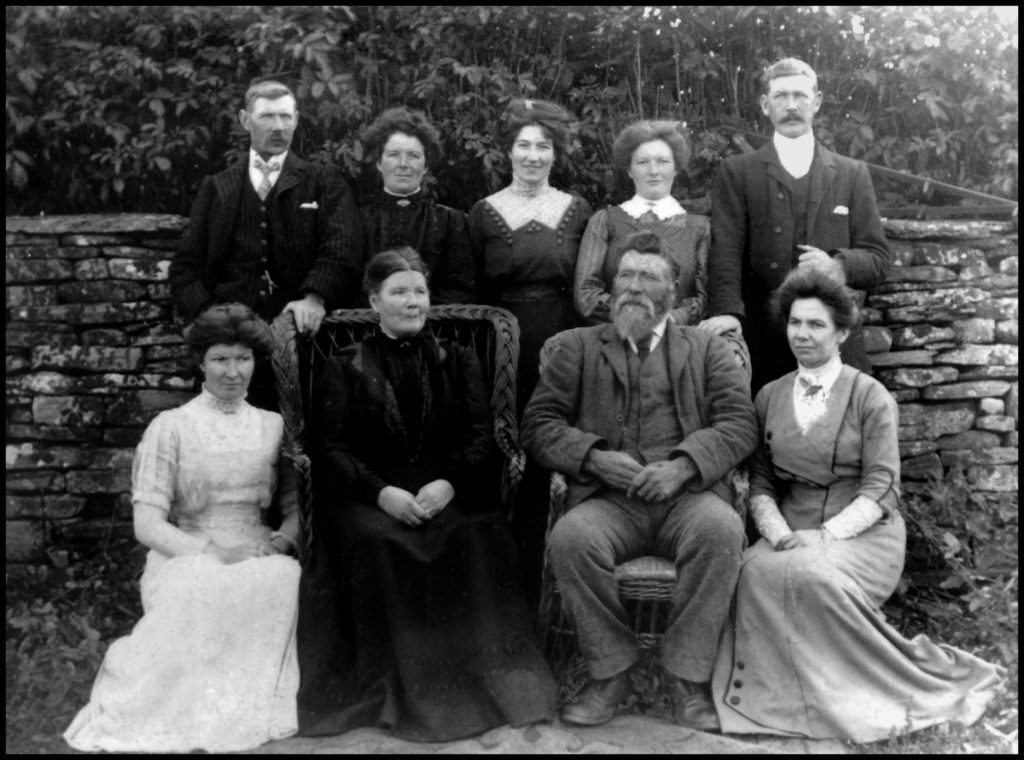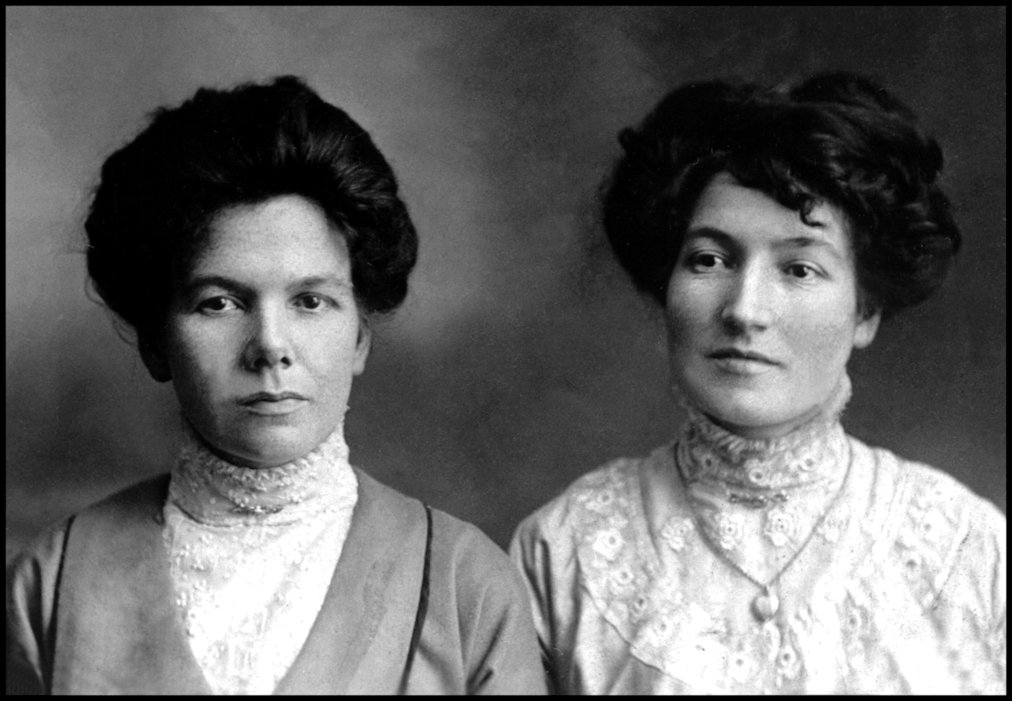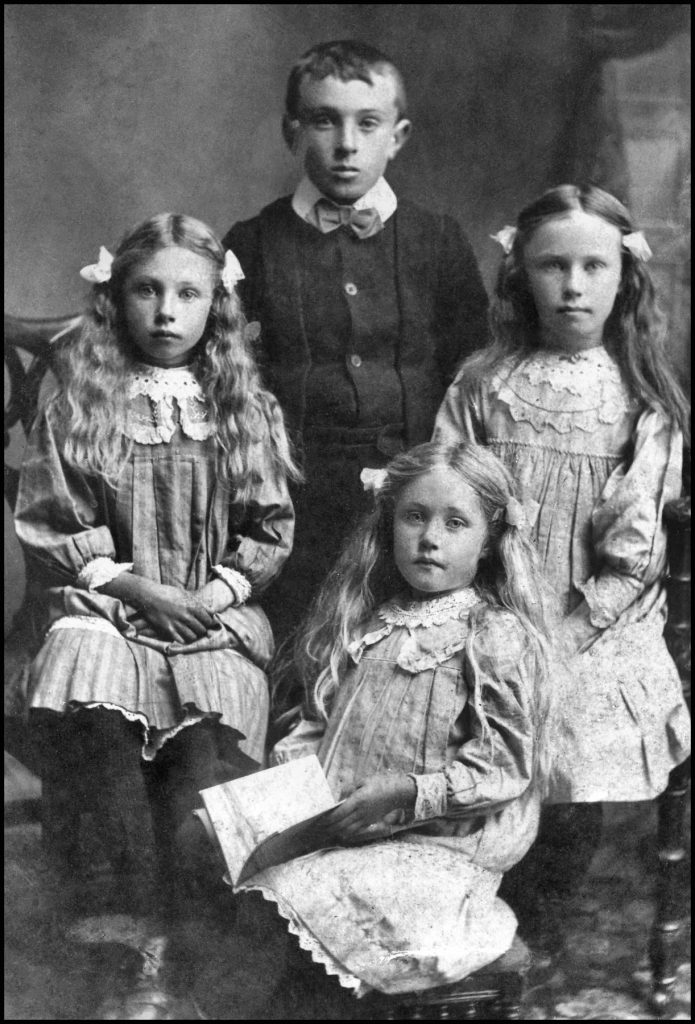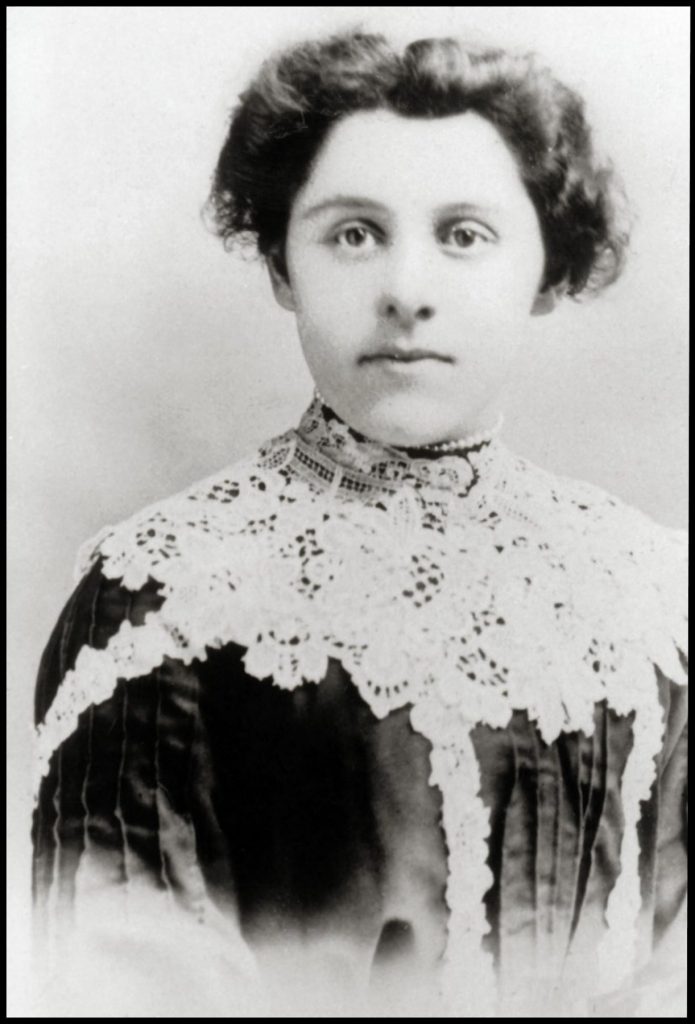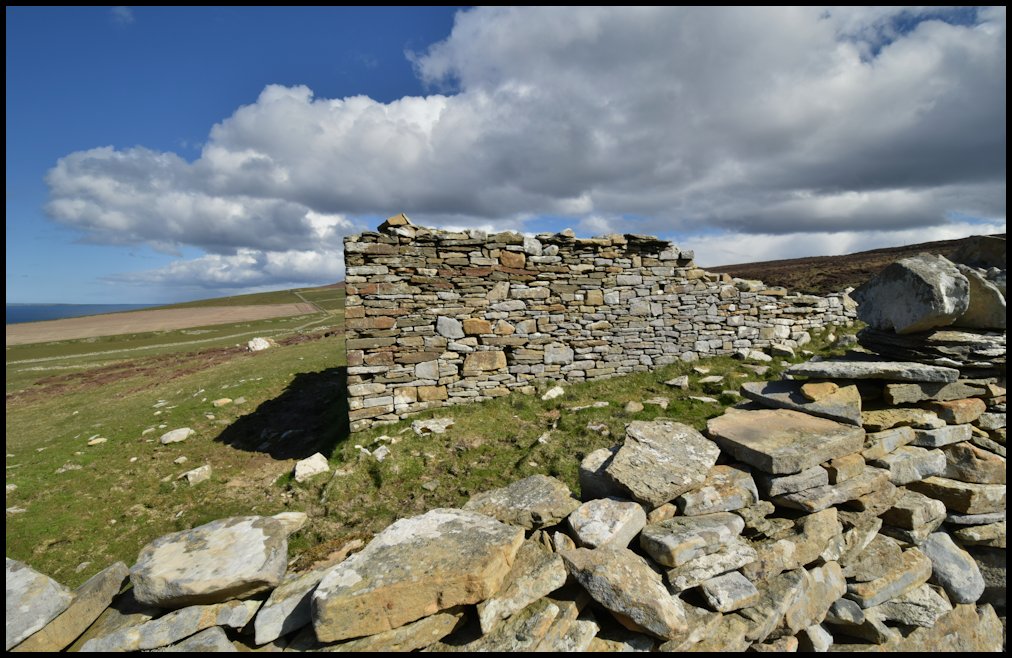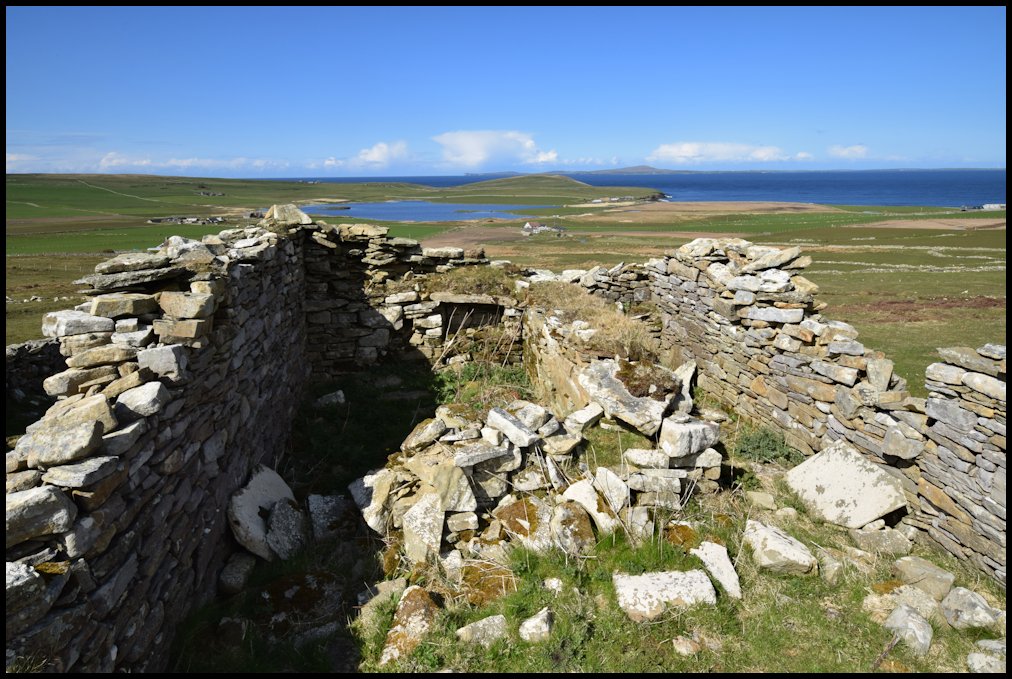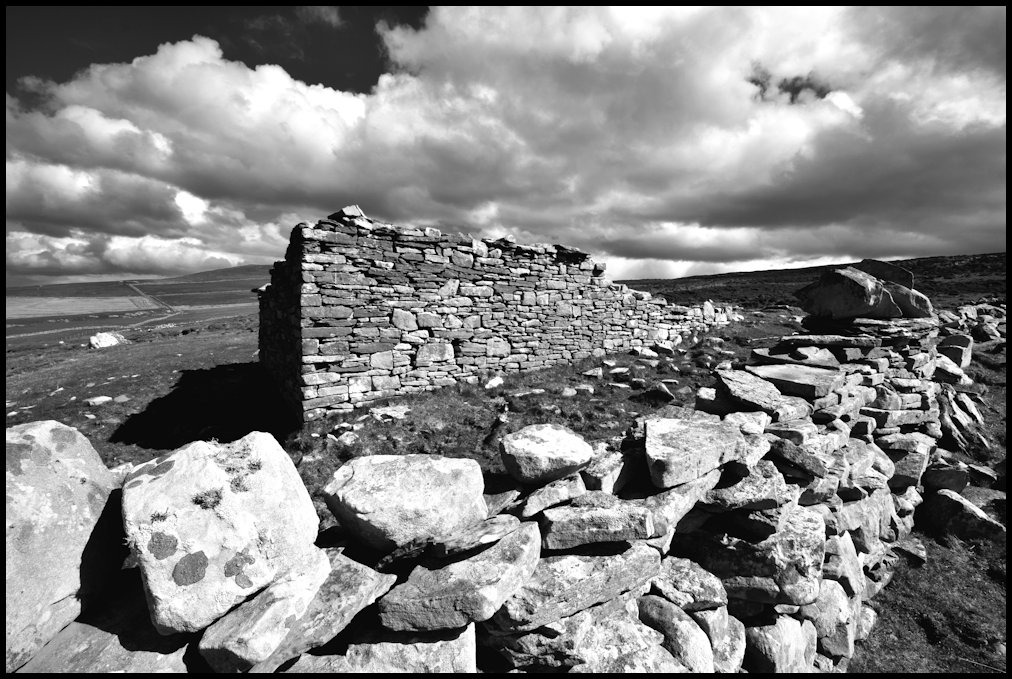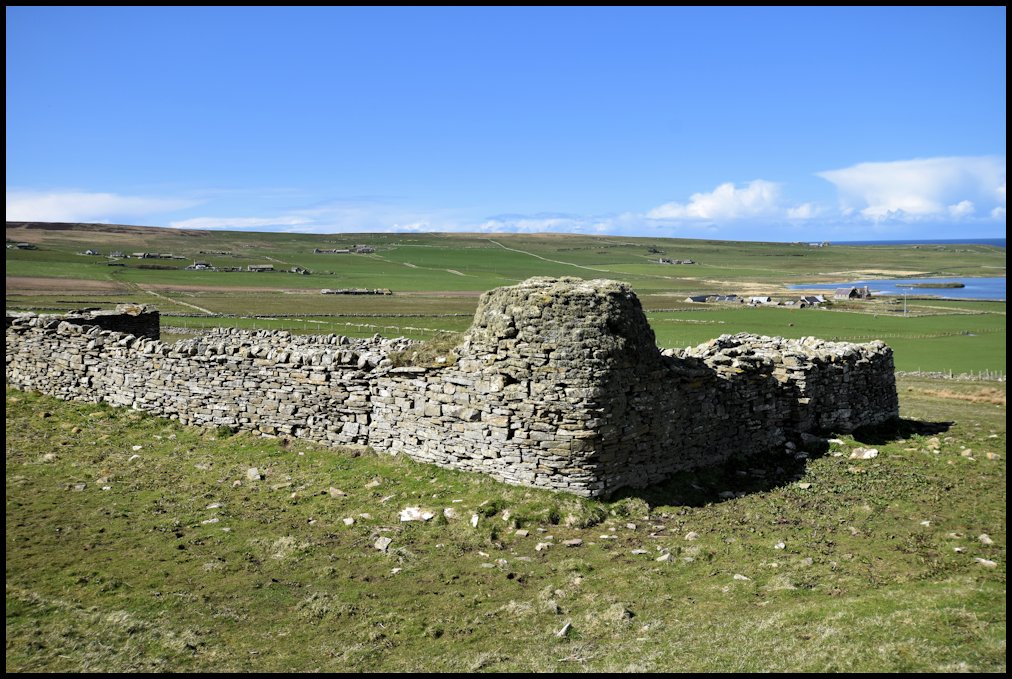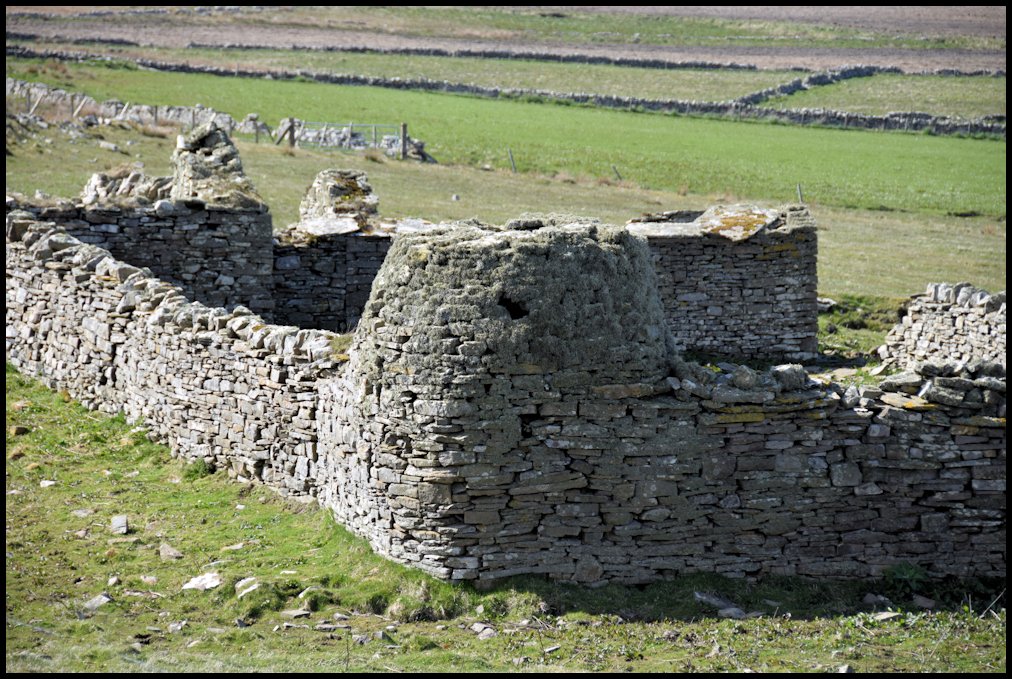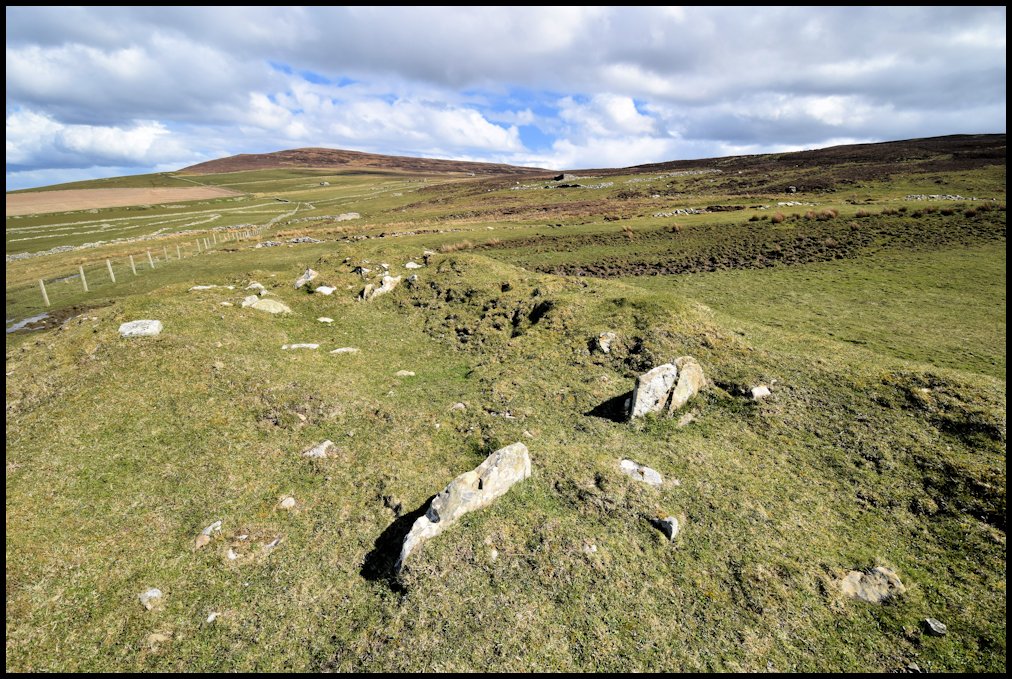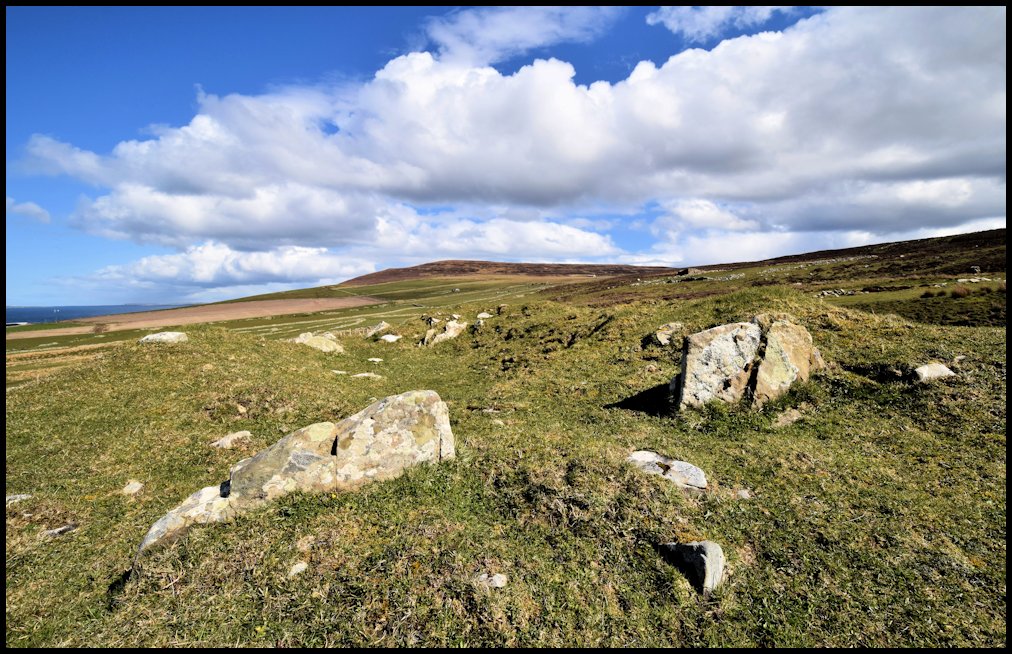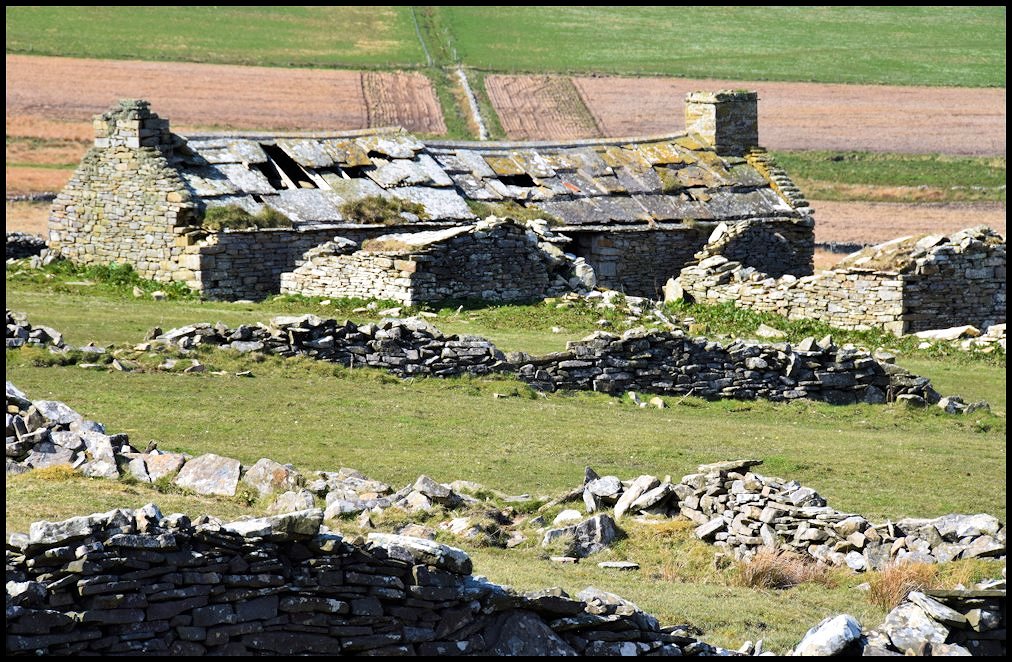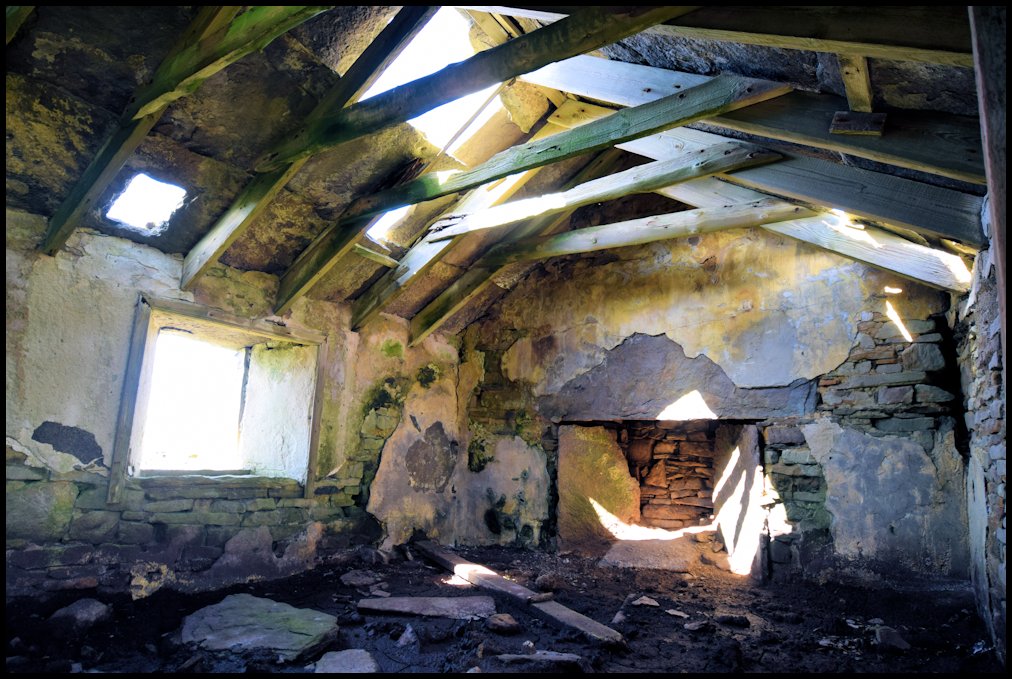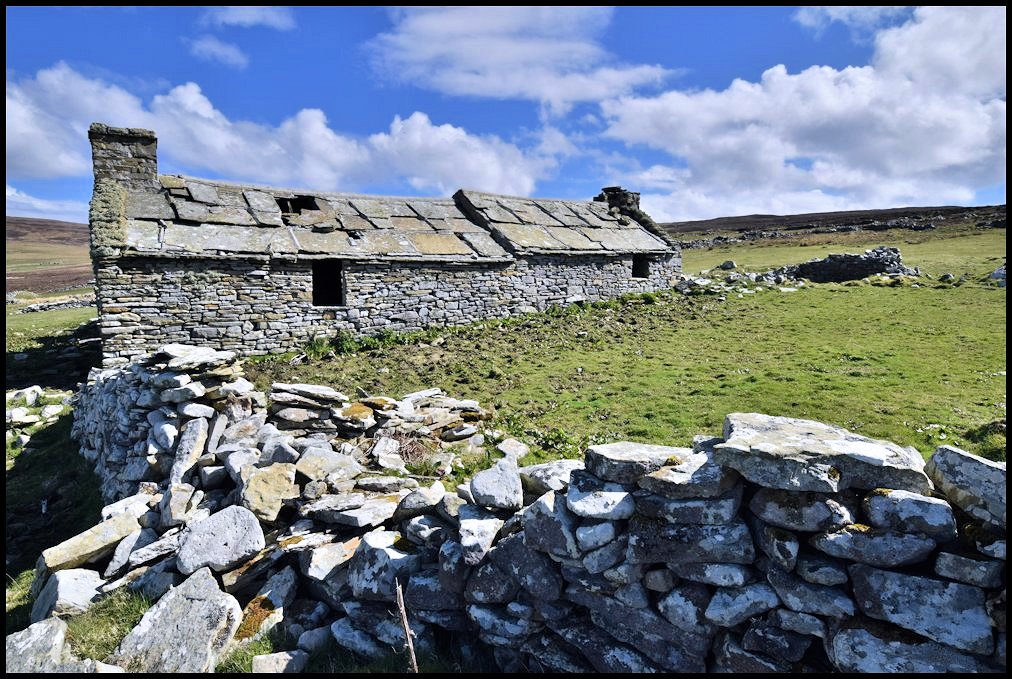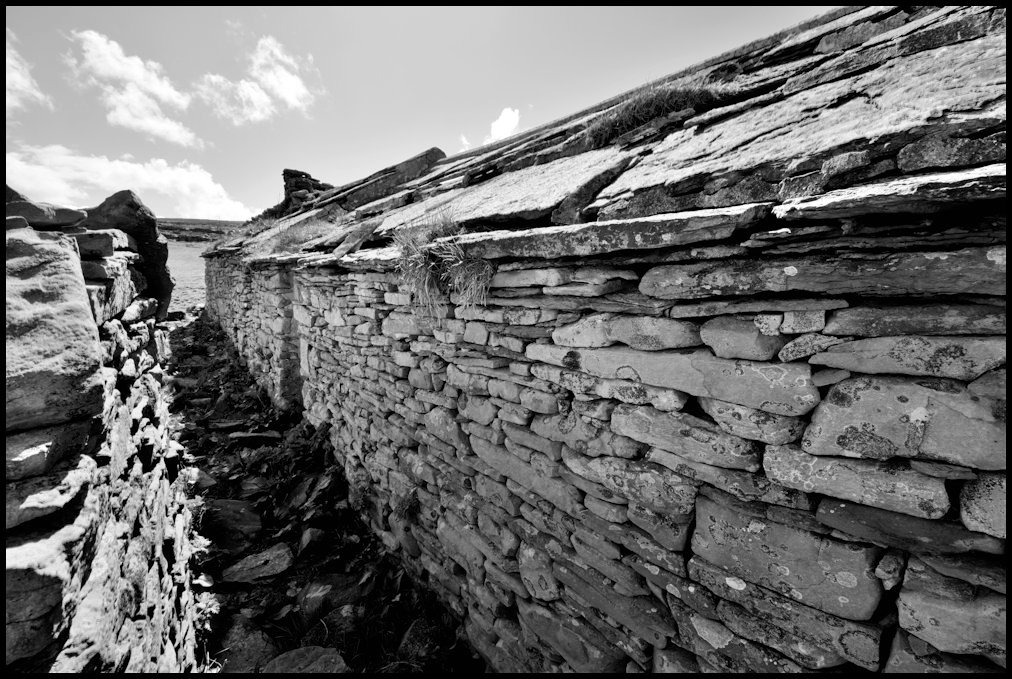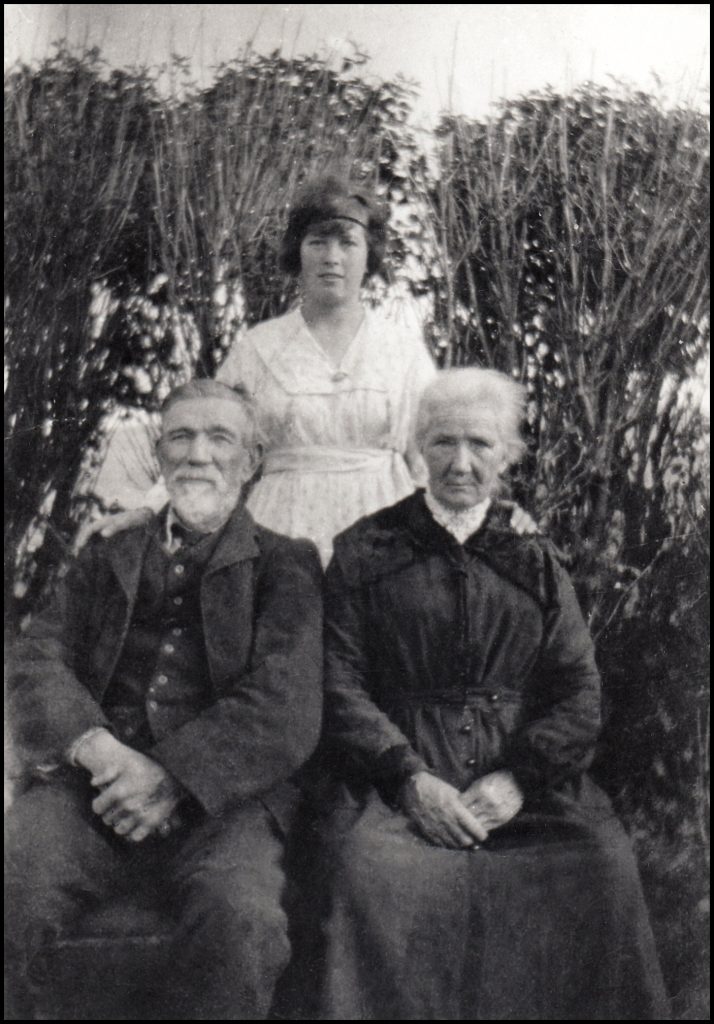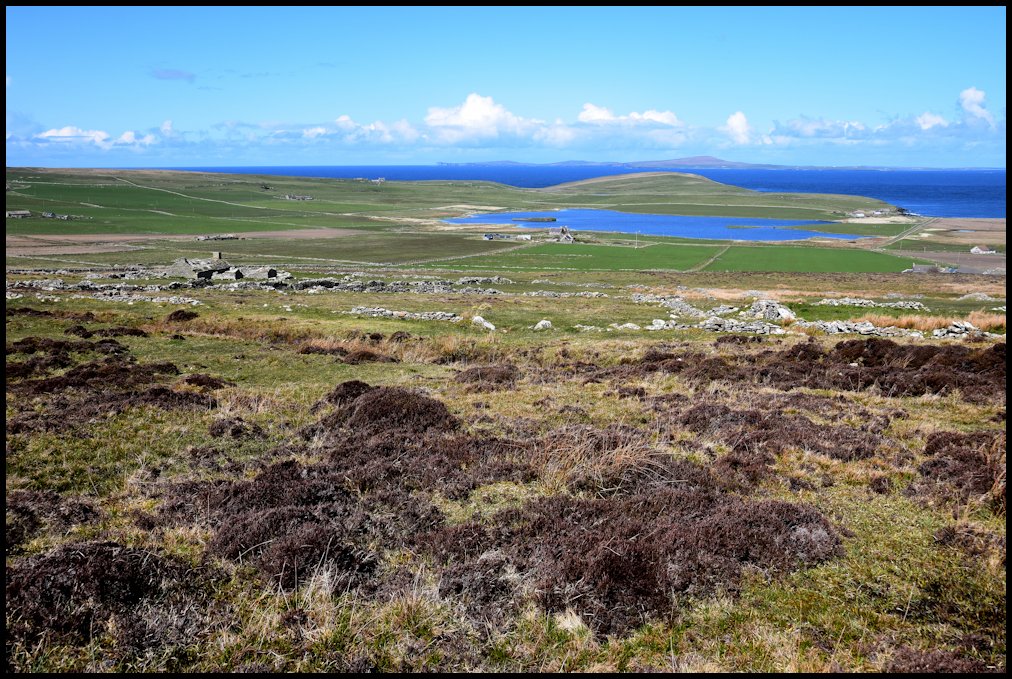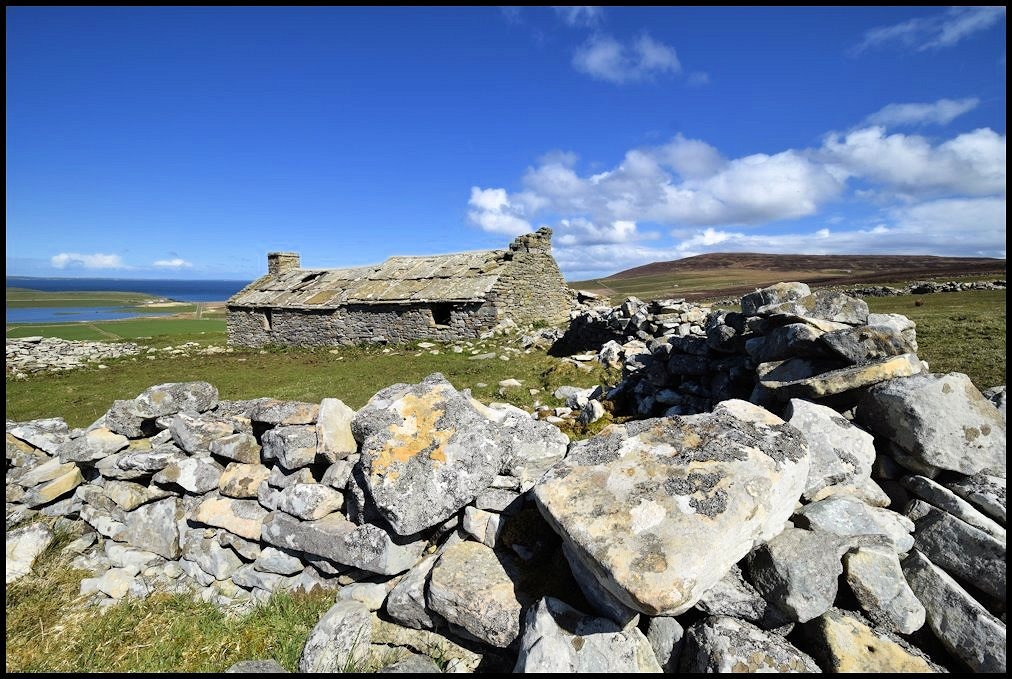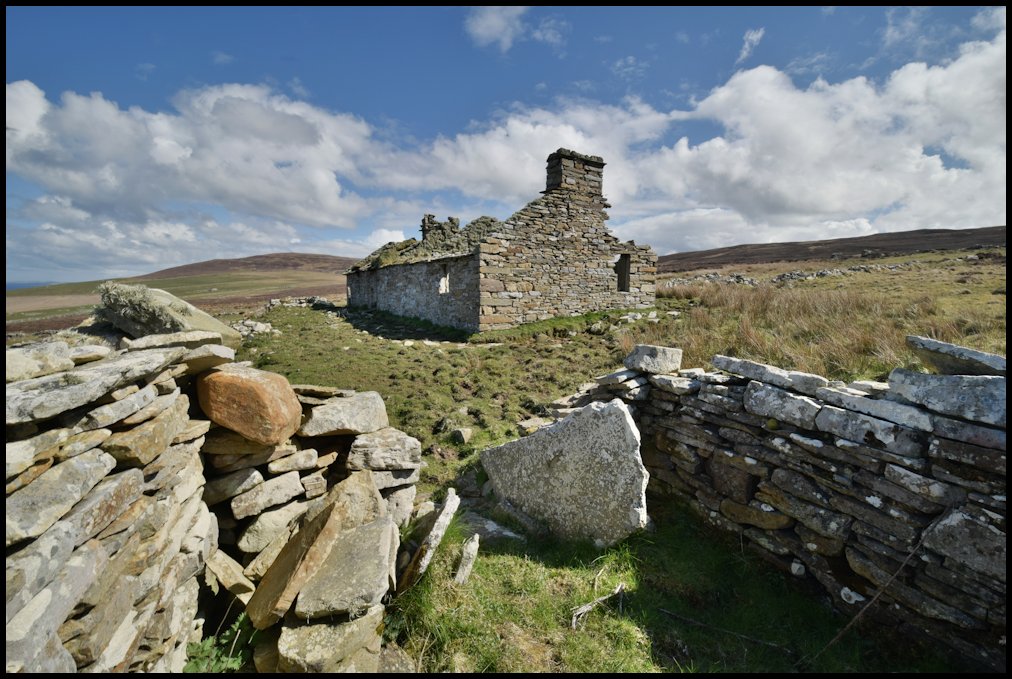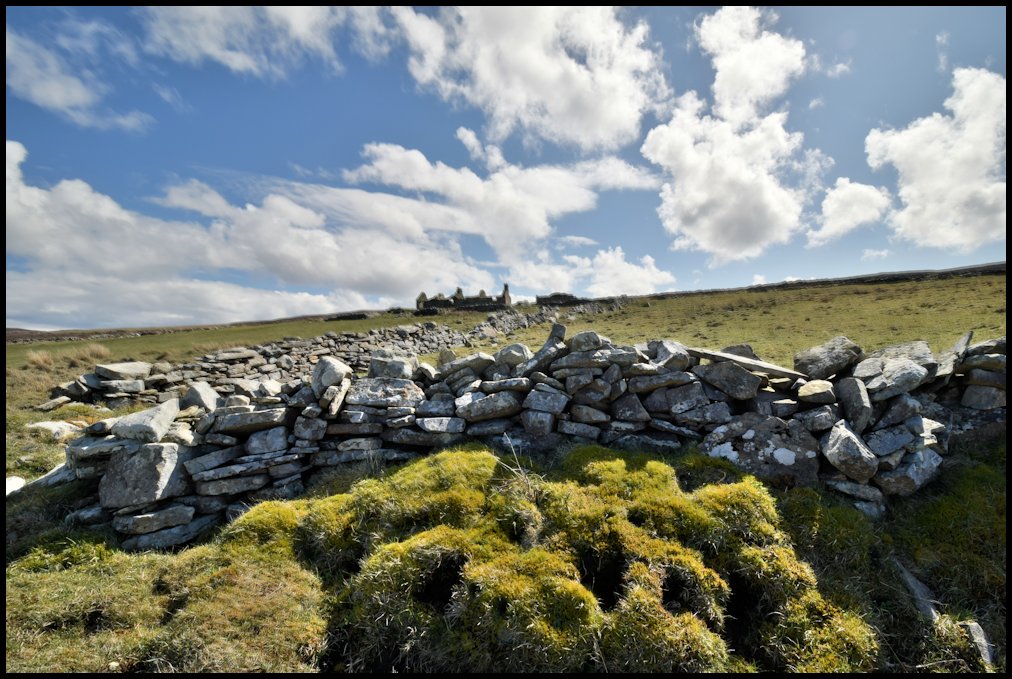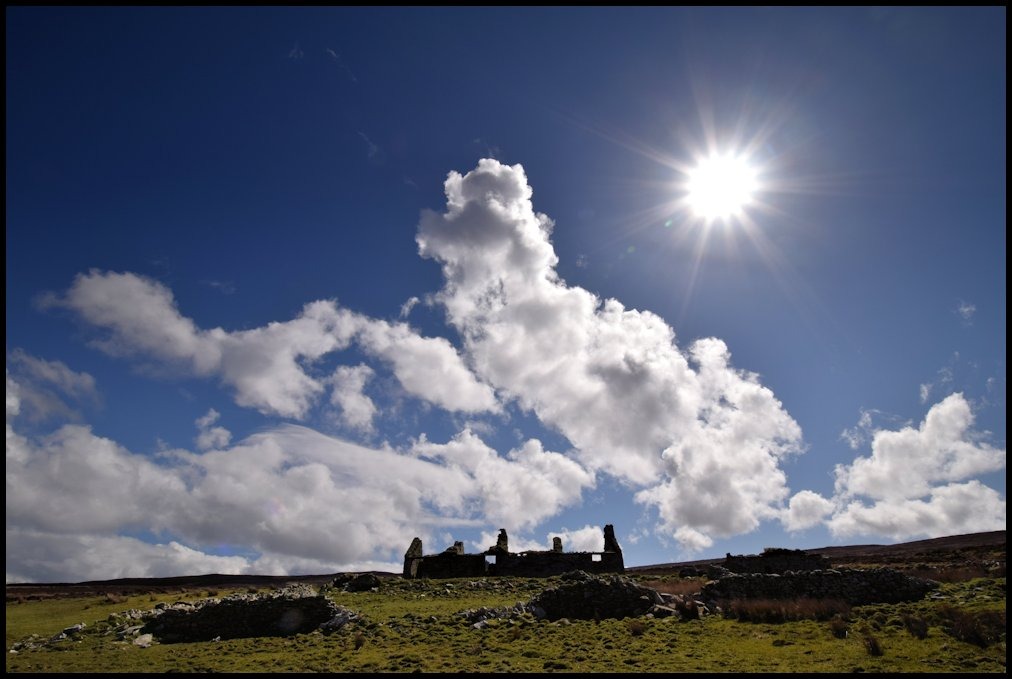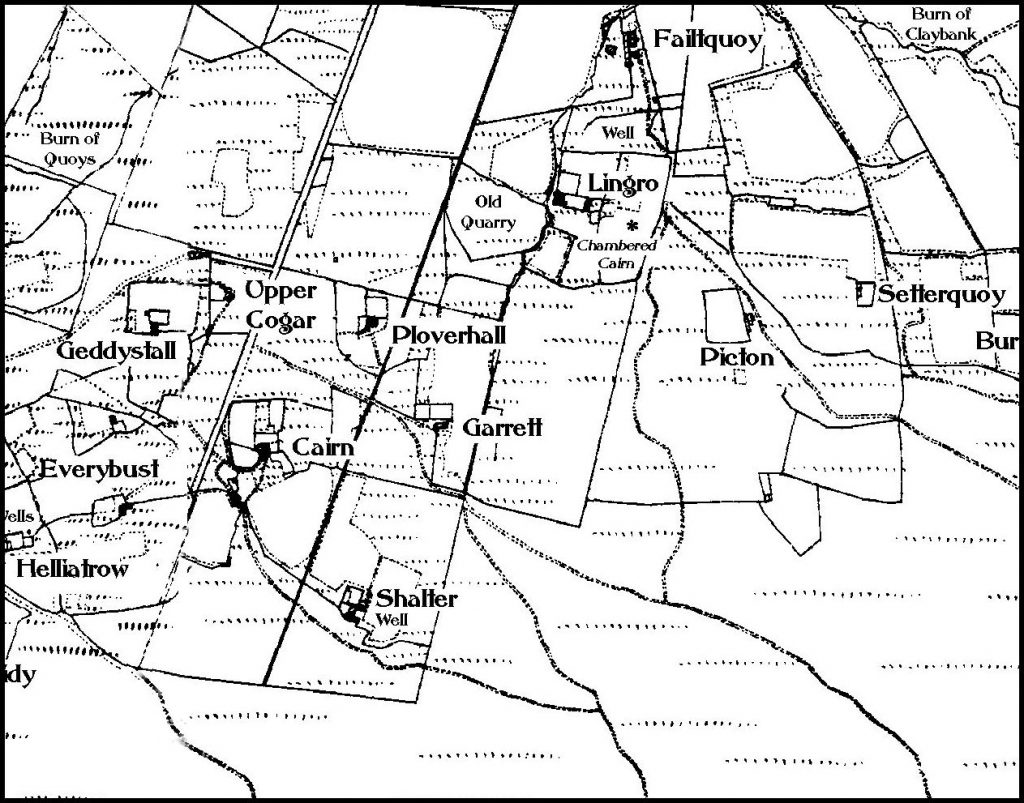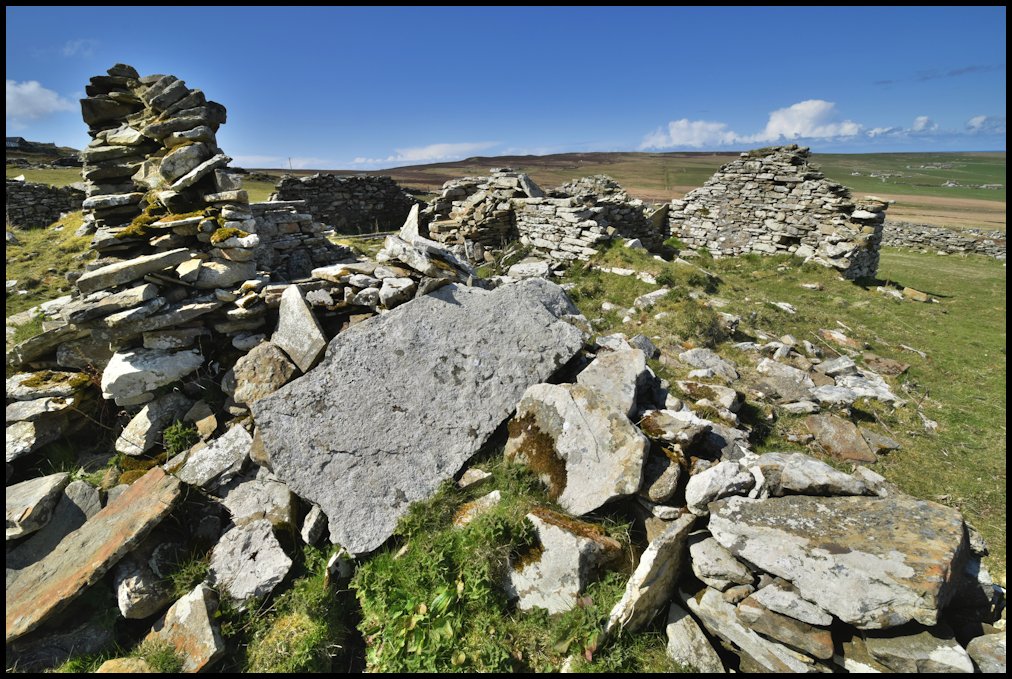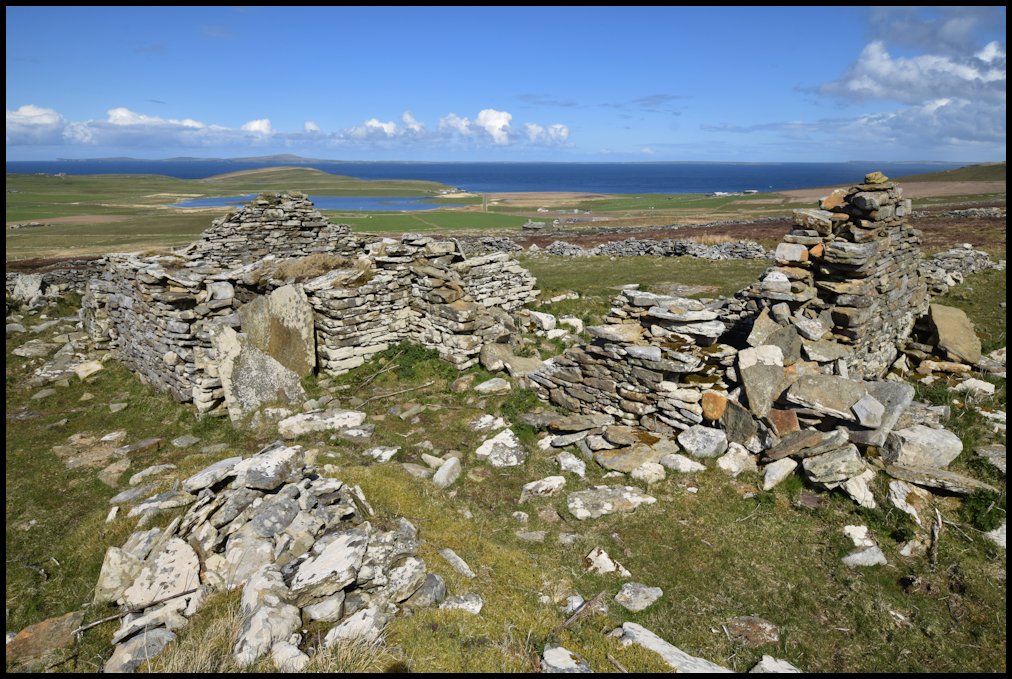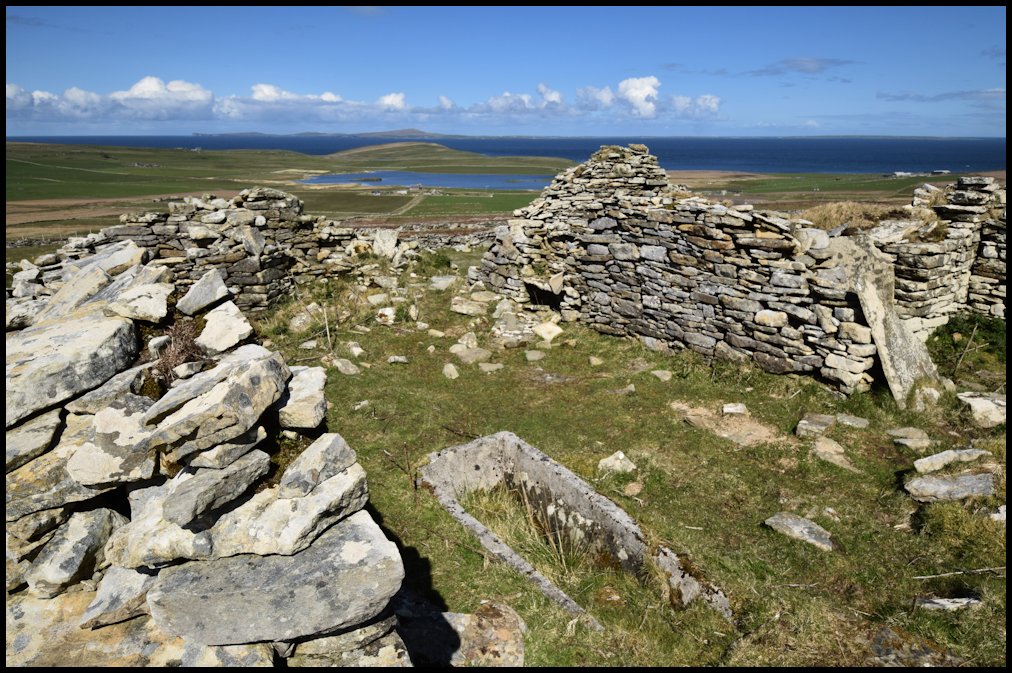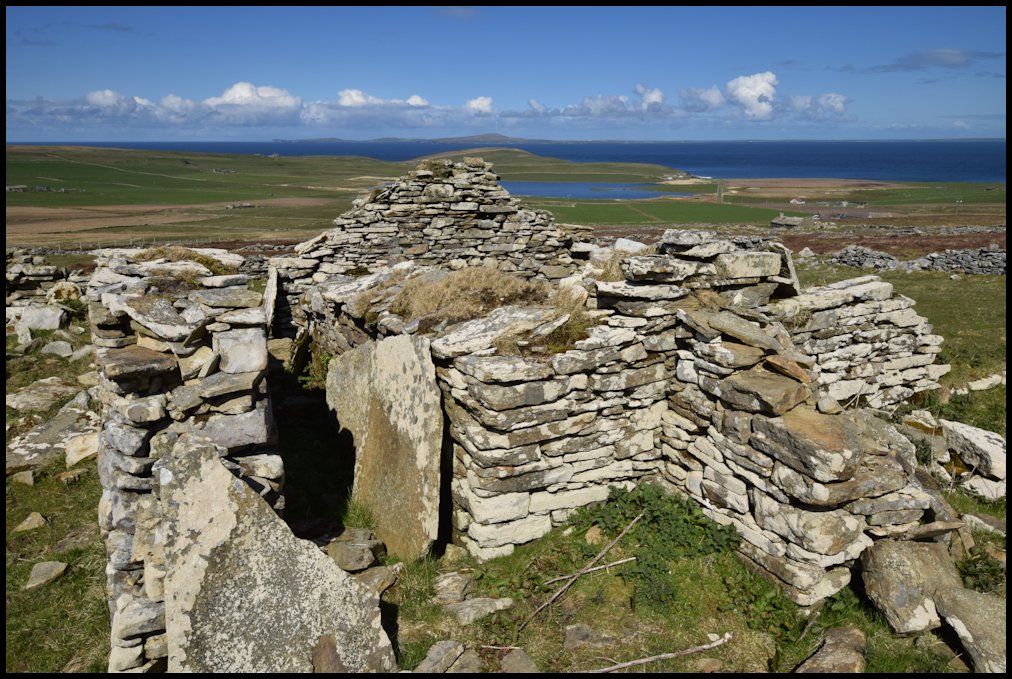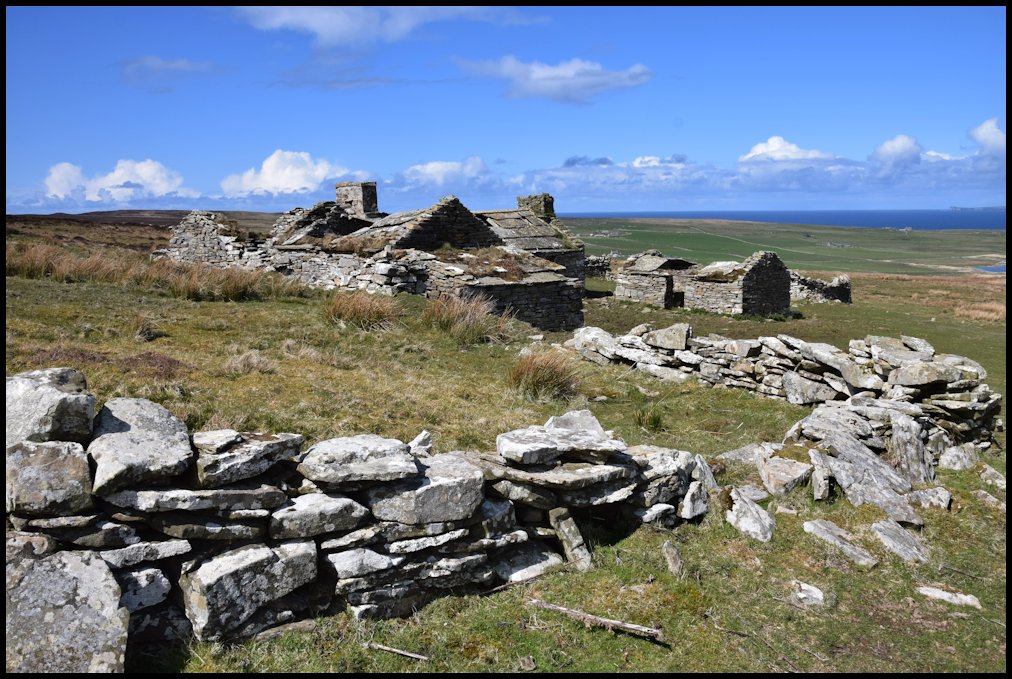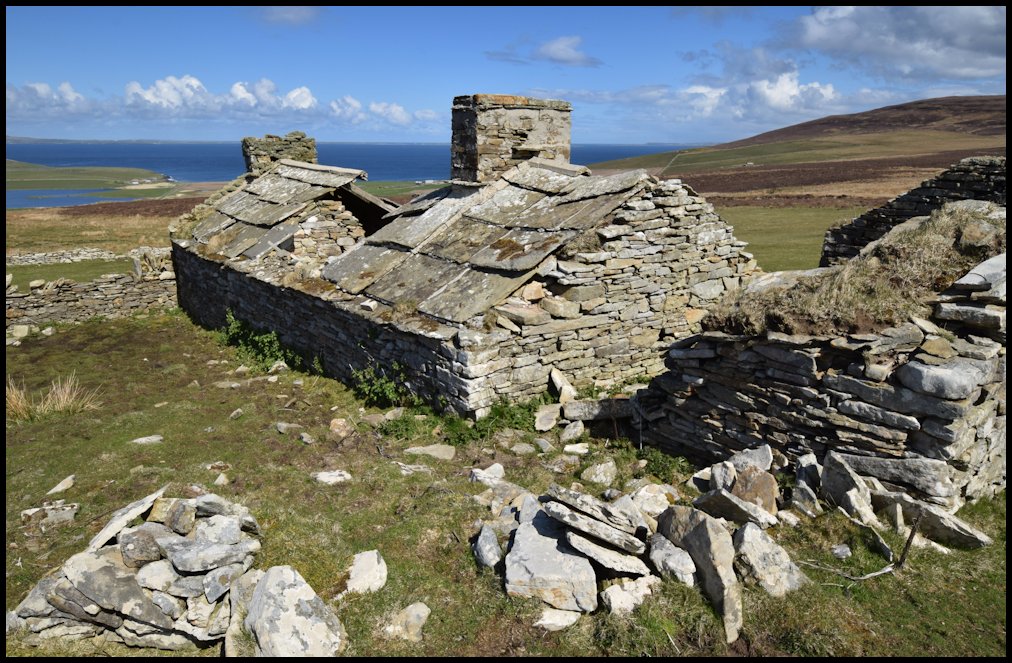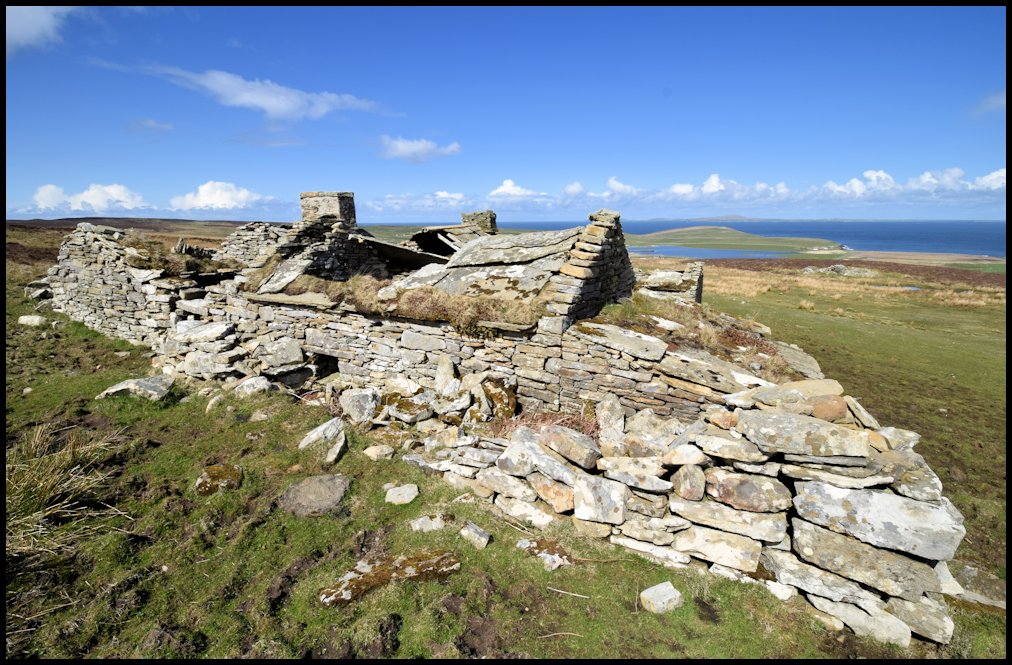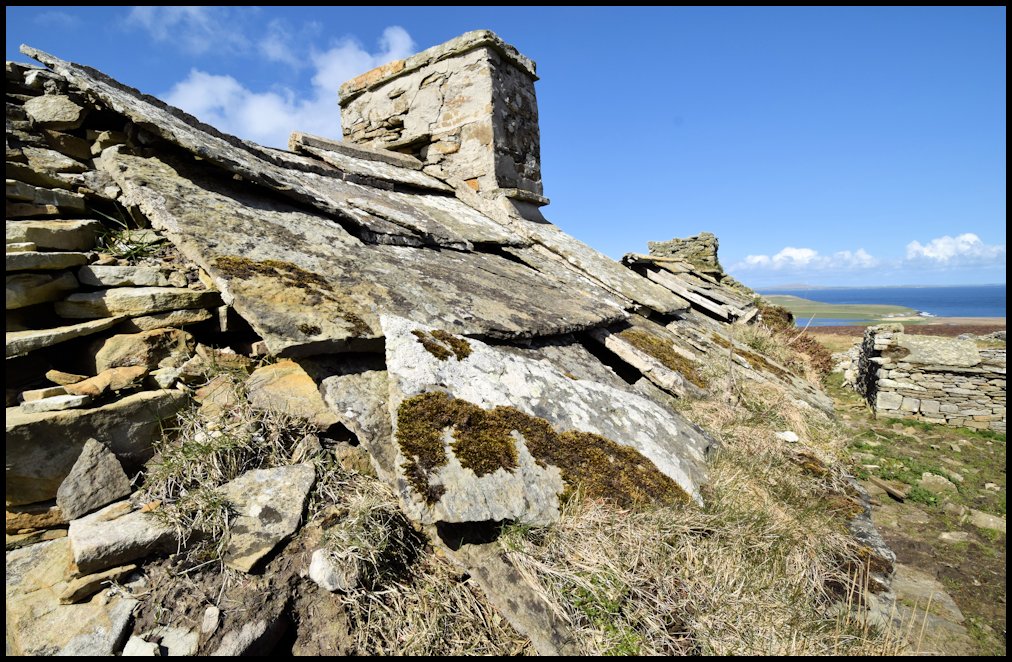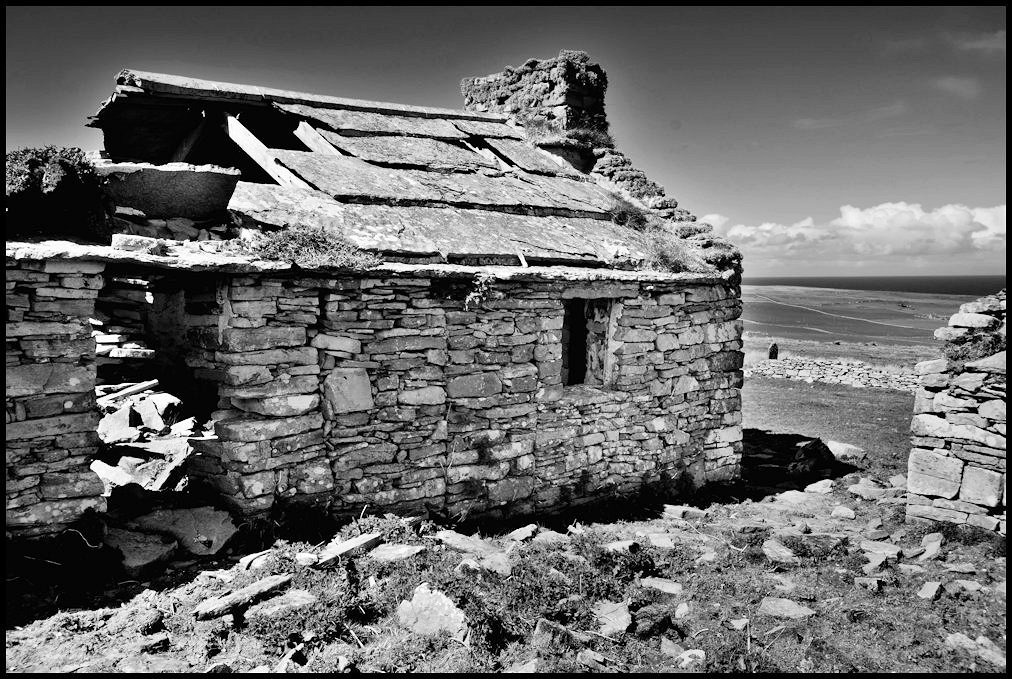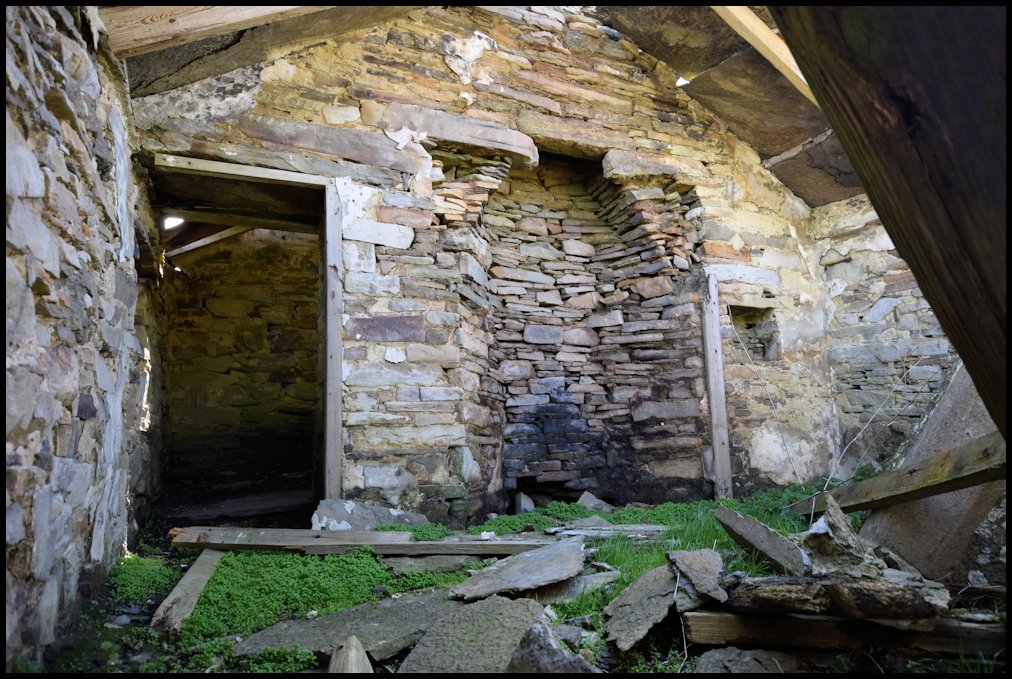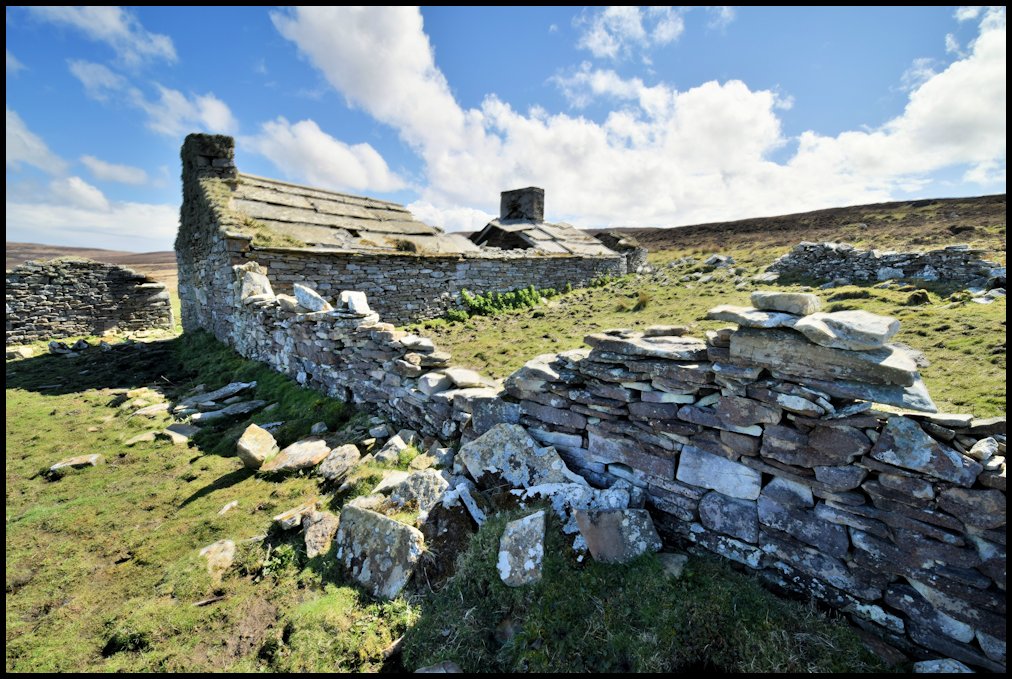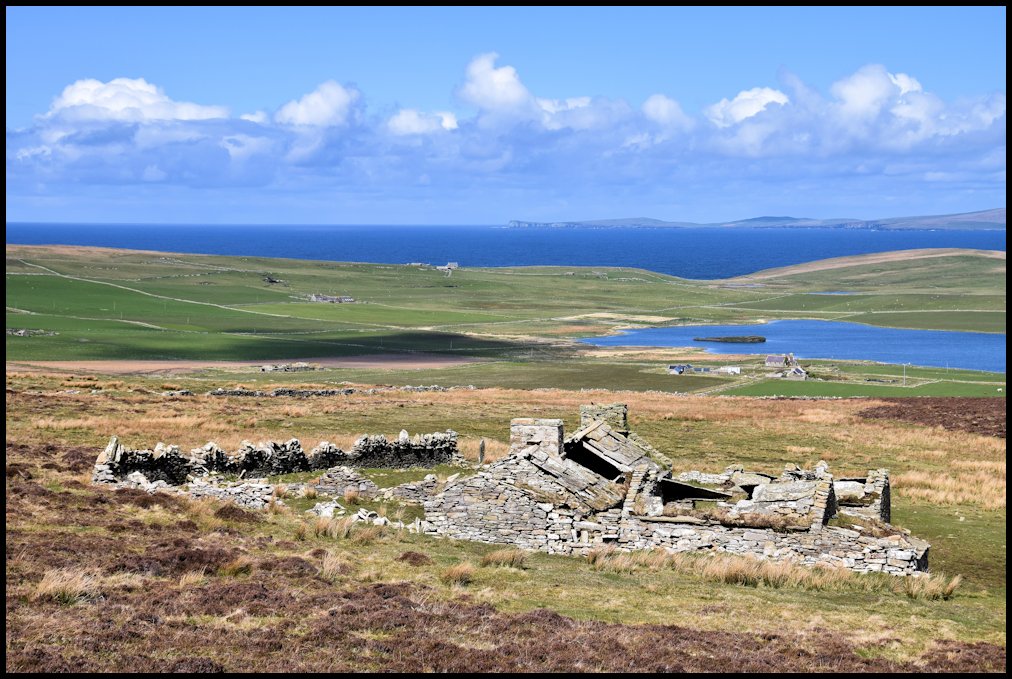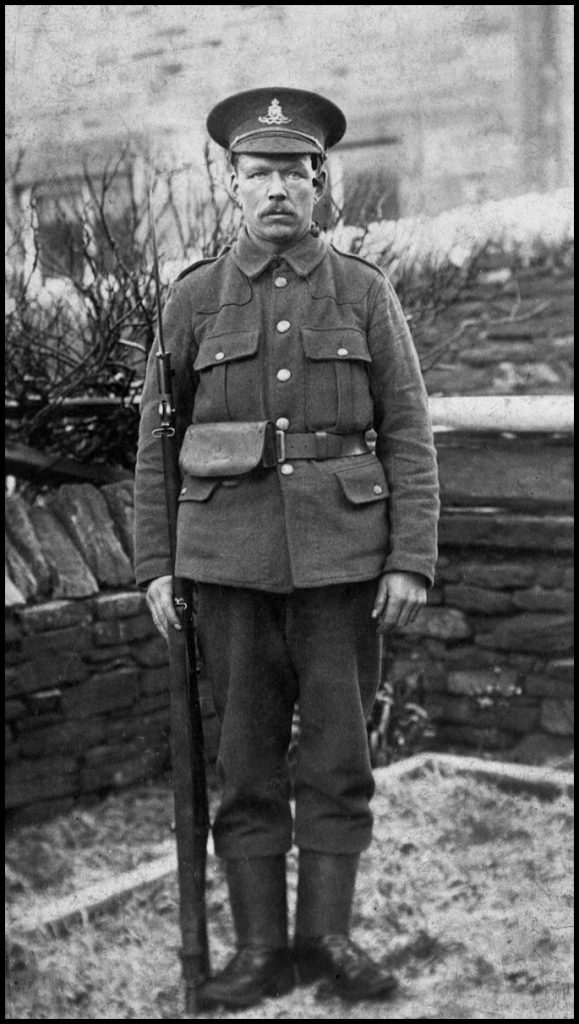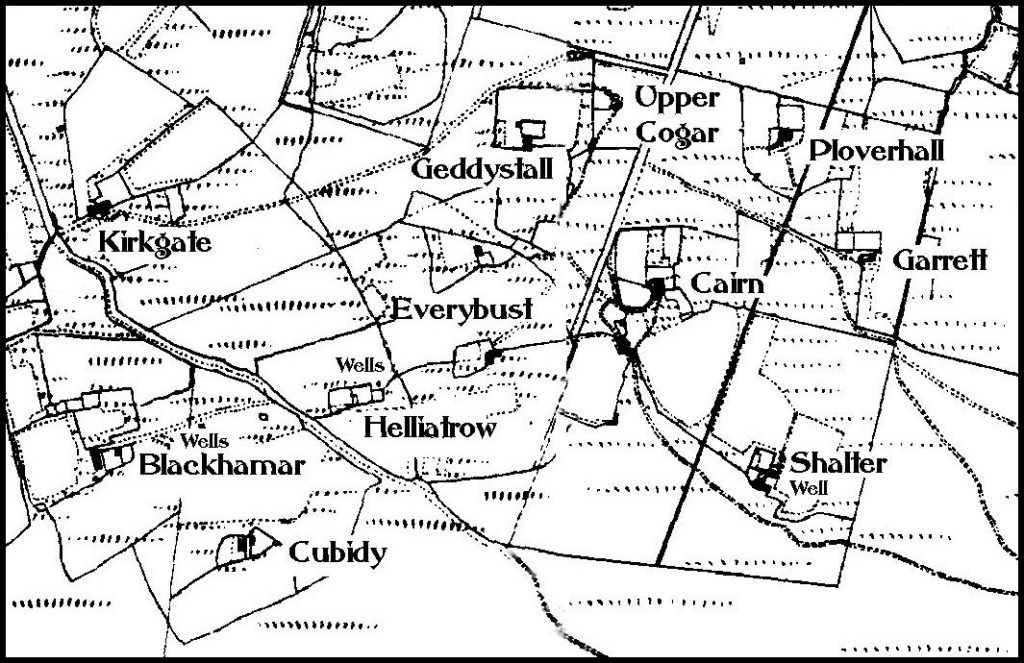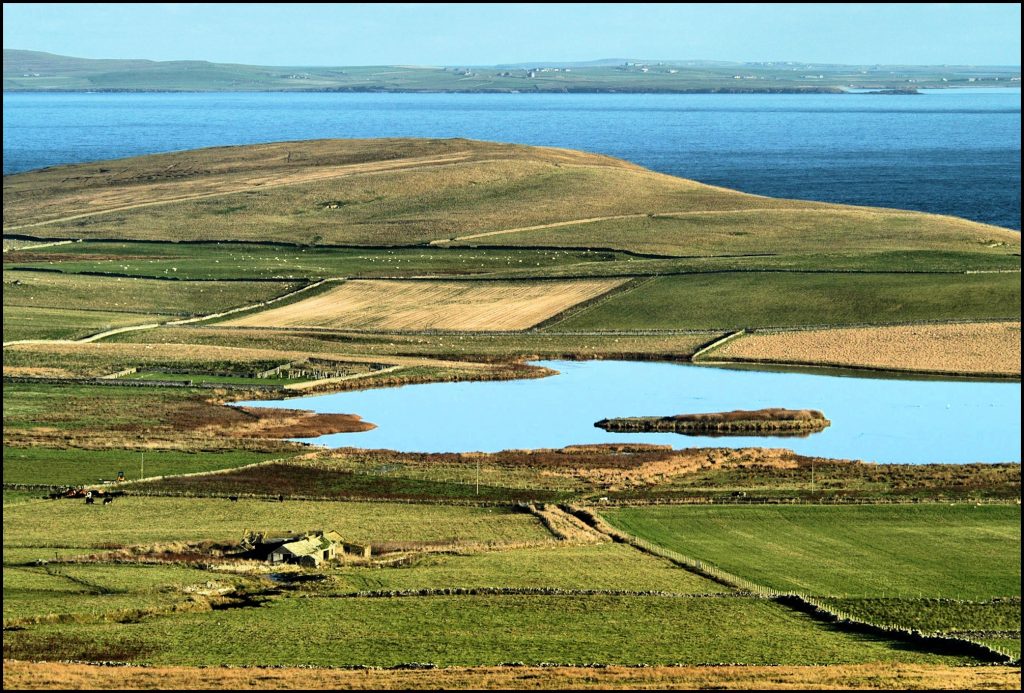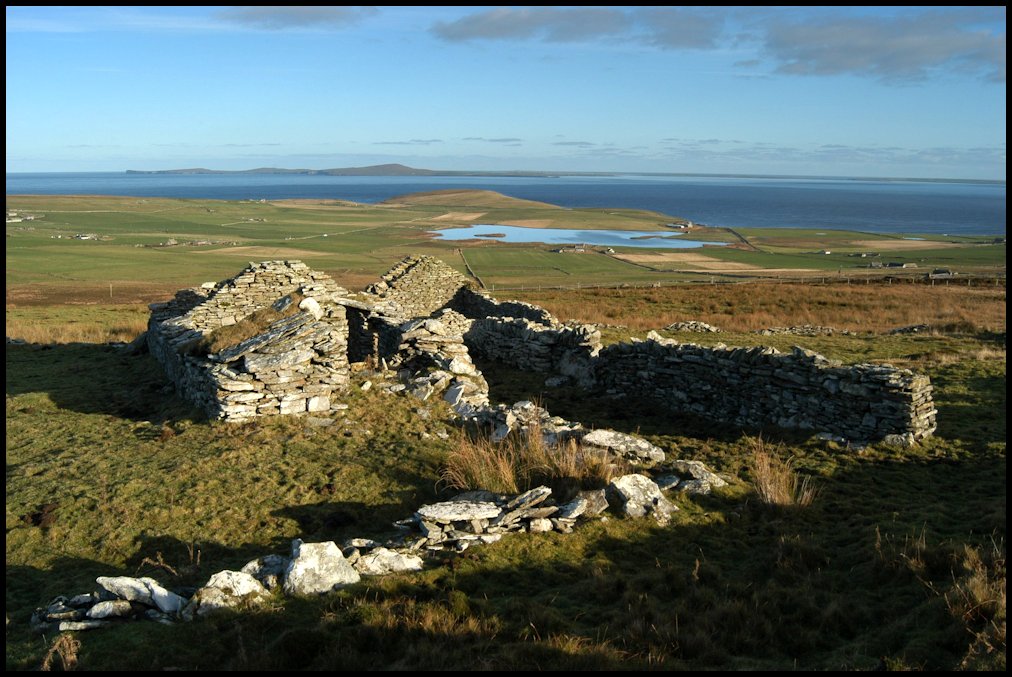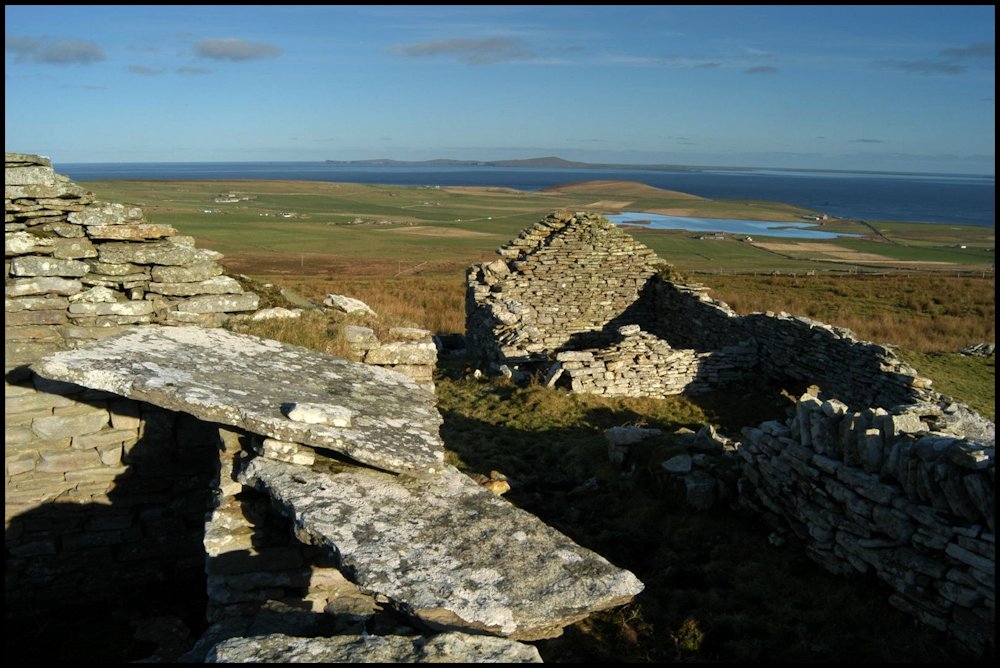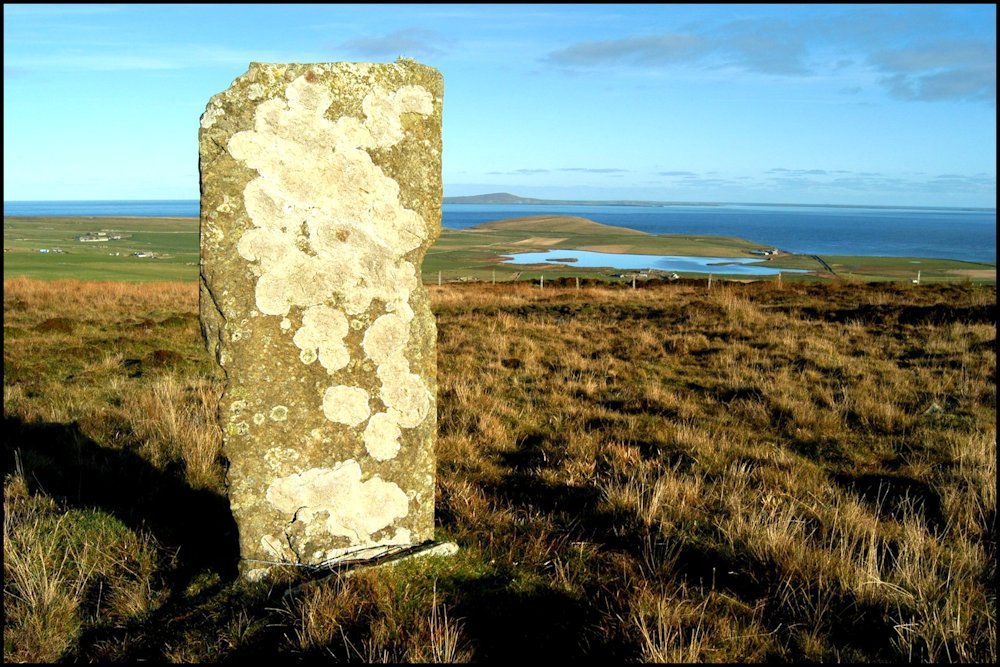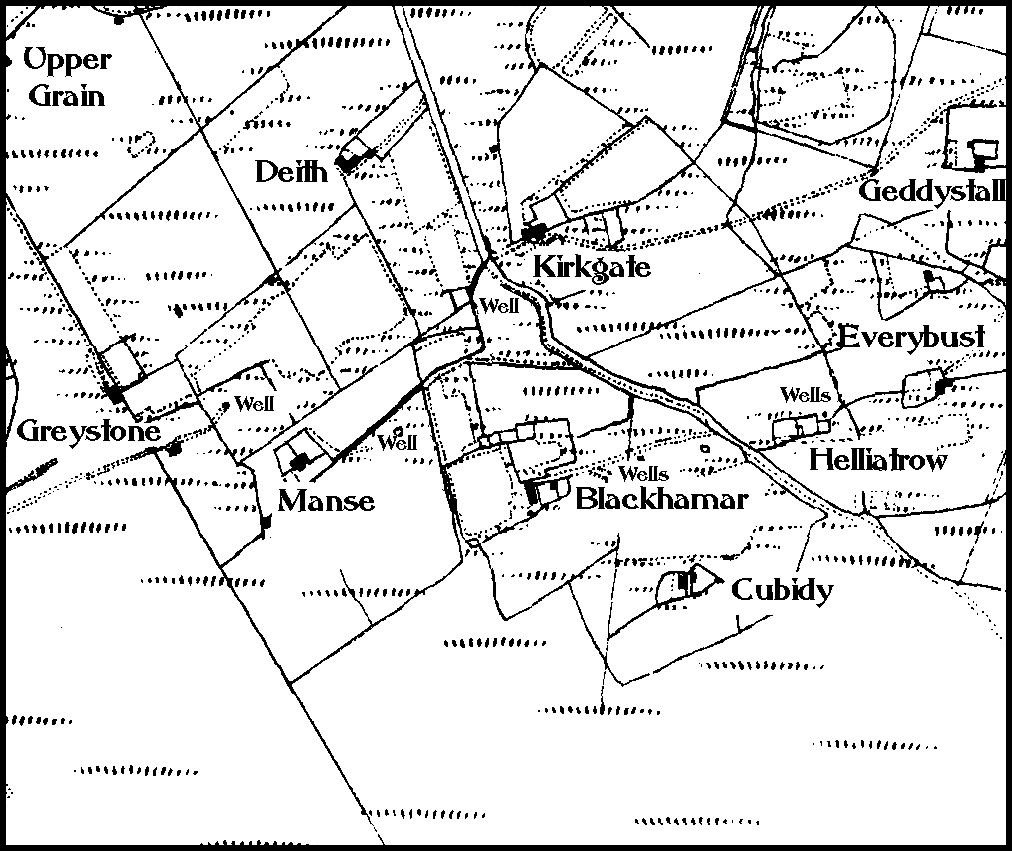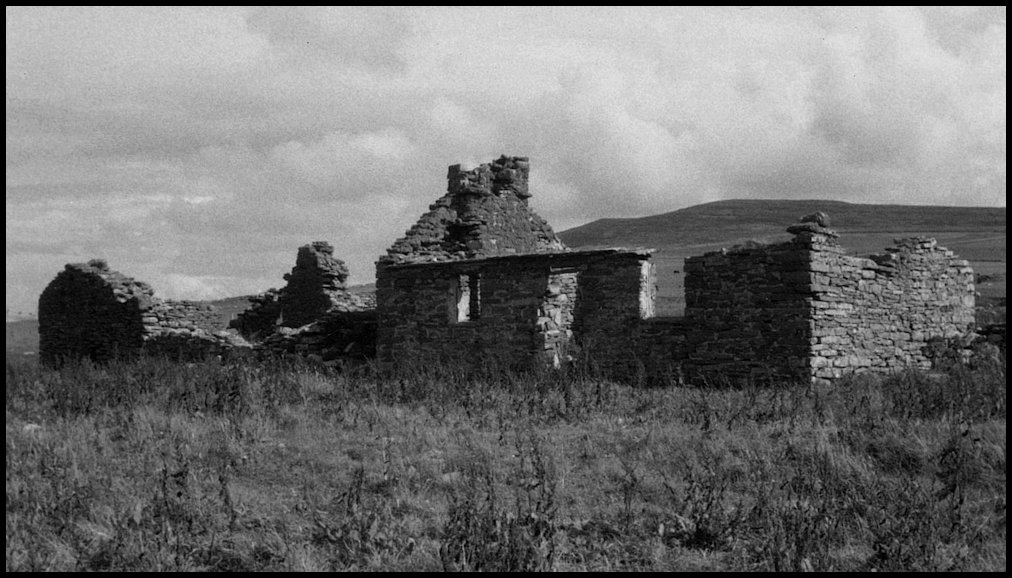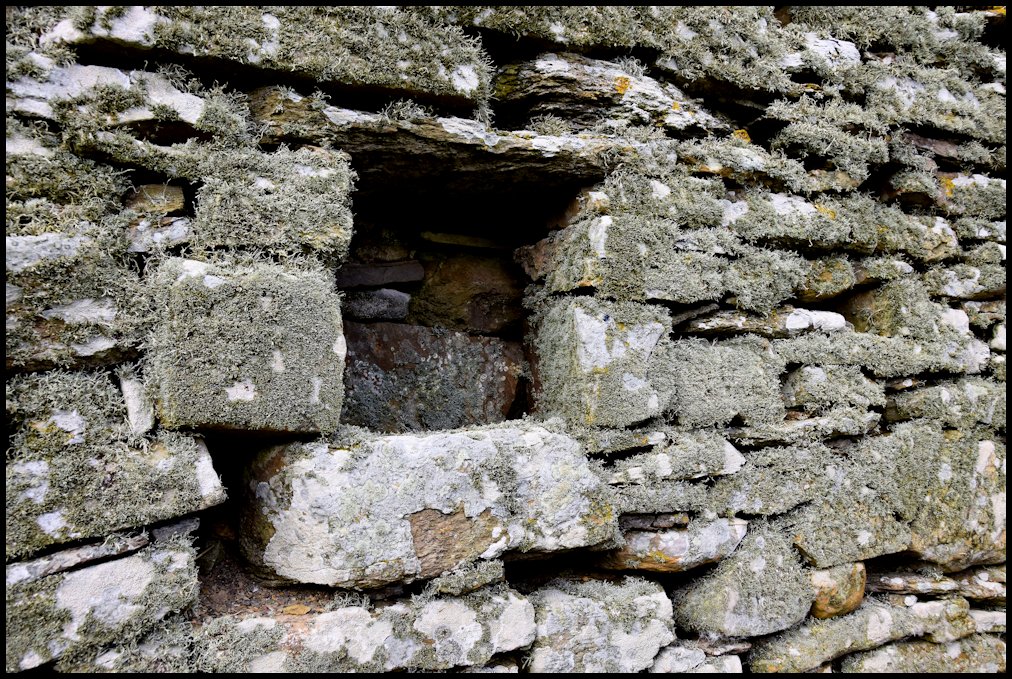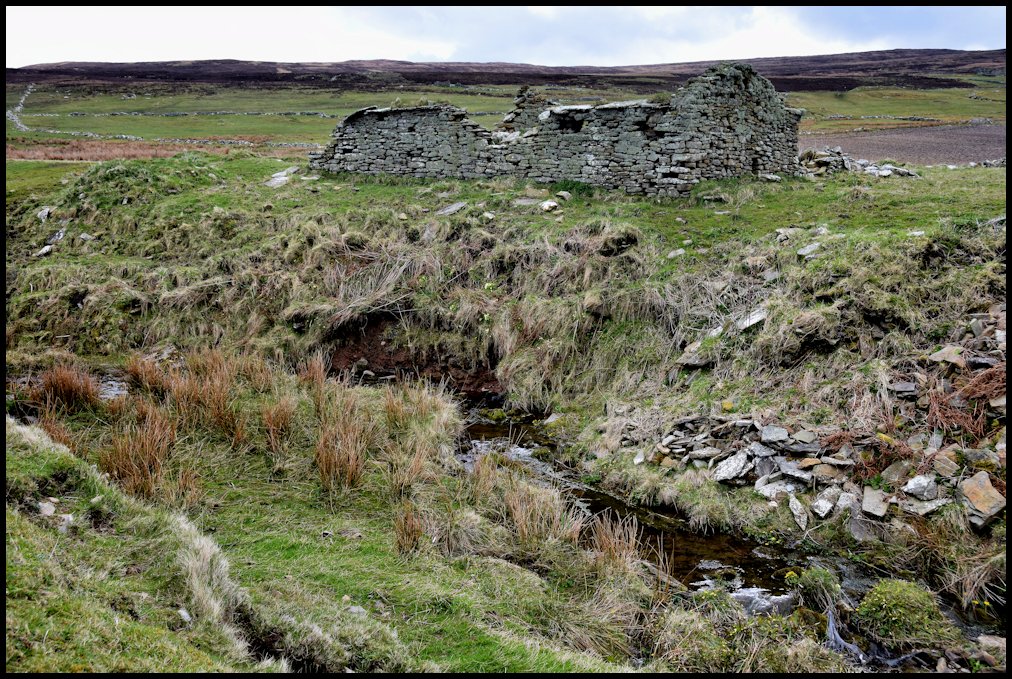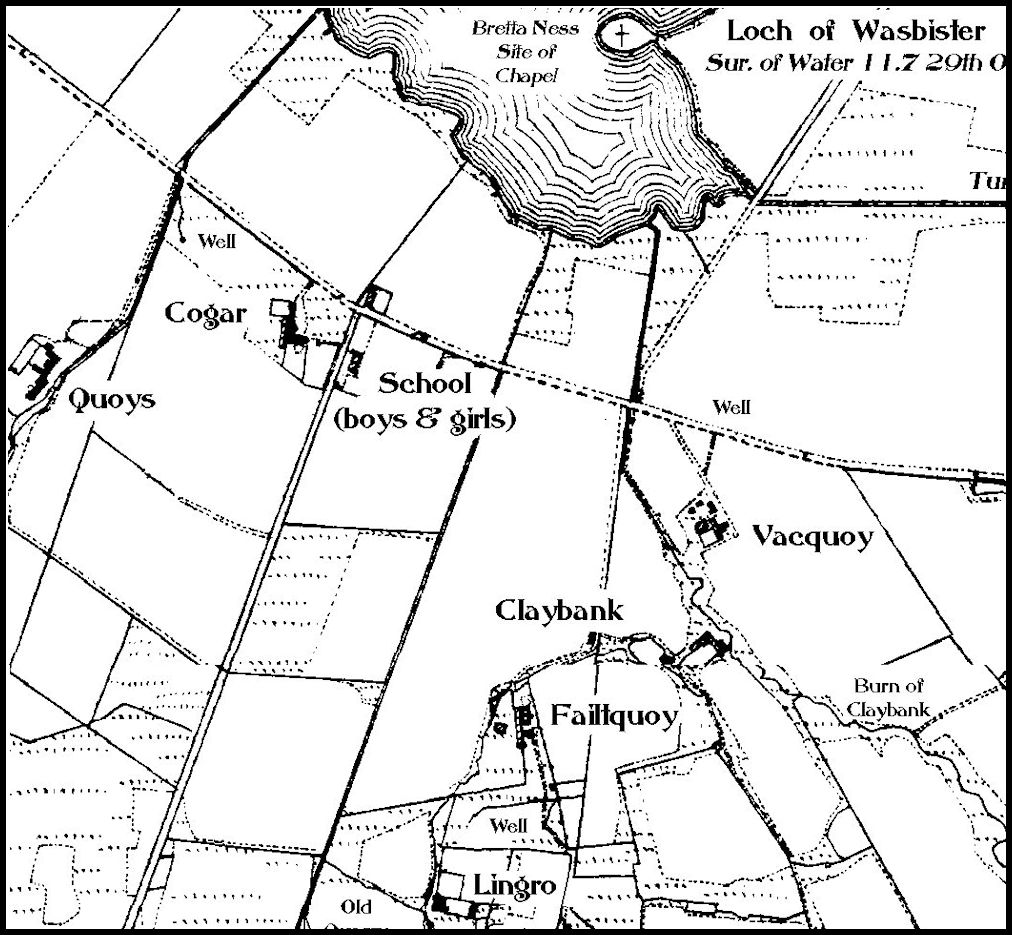The earliest mention of Feolquoy is in an old account book of David Traill dated 1581, when the occupants were Thomas, Magnus and James Low. Henry Craigie lived there in 1740 when it was spelled Philquoy, followed by John Marwick, and in 1793 William Wishart was resident, according to the old parish records.
In 1841 it was home to 60-year-old farmer George Marwick and his family, and he paid rent in kind. In 1843 George paid £3 13s 4d, together with a half share of the farm of Neager as well as Feolquoy. In 1844 George was classed as a ‘life-renter’ and he paid £418s 4d with Seaterquoy and Loweshouse added. According to Hugh Marwick in his book Place Names of Rousay both the latter properties were so named probably from a family of that name, Lowes being on record as living in Wester in the 17th century.
George’s parents were Hugh and Margaret Marwick and he was born in 1782. He married 34-year-old Marian Hourston of Sound, Egilsay, in 1813 and they had three children; Katherine, born on April 5th 1814; Hugh, born on January 13th 1816; and Margaret, born in 1818, but she died in 1831.
Katherine Marwick married David Gibson of Skatequoy and between 1838 and 1853 they raised a family of six children at Feolquoy. Hugh was a fisherman, as was his brother-in-law David. He married Margaret Craigie of Hullion in 1847 and had a son, Robert, born in 1848. Hugh died the following year on January 9th, aged 33 years.
In the 1851 census Feolquoy is spelt Fialtquoy. Farmer George and his son-in-law were working on the land and Marian and daughter Katherine worked in the home, surrounded by five youngsters. Marian was 77 years of age when she died on December 15th 1856 and husband George was the same age when he died on February 1st 1859.
The inscription on George’s gravestone states that he was an heir to the estates of Saviskaill. Records show that there were Marwicks in Saviskaill in the 1700s.
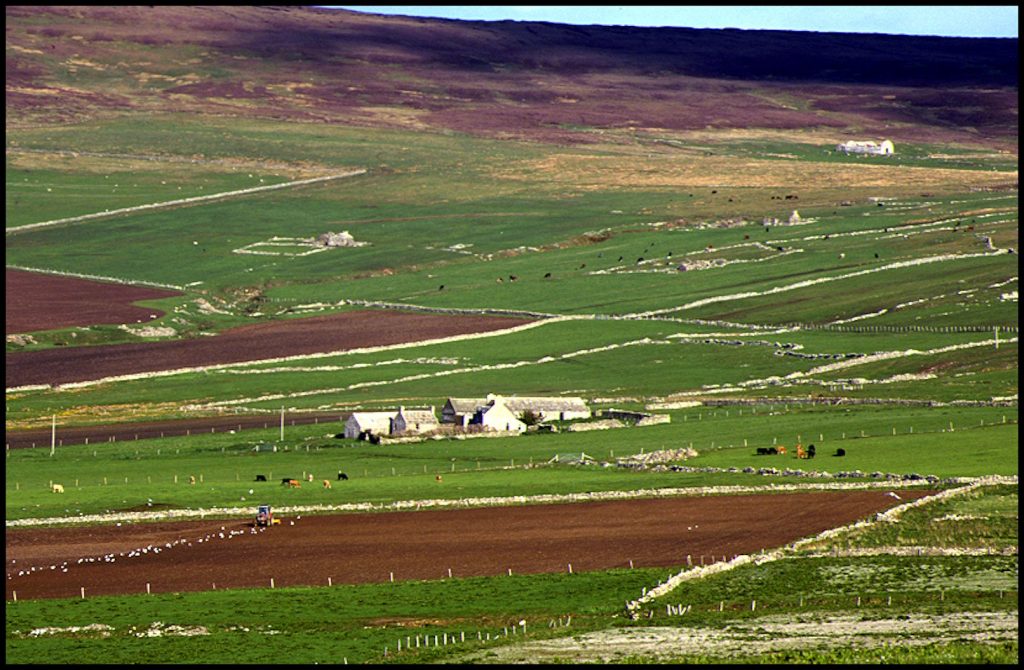
Feolquoy’s 53 acres were in the hands of the Craigies by 1861. Alexander Craigie was the son of Drummond Craigie and Barbara Murray of Whome, on the Westside. He was born at Kettlewhoam on April 25th 1808 and married Ann Murray of Tofts in Quandale, whose parents were Magnus Murray and Janet Robertson.
Alexander and Ann had seven children between 1837 and 1856, the first four being born at Whome and the others at Loweshouse. Mary was born on July 17th 1837. She married Paterson Craigie of Claybank and later Viera Lodge in 1858; Janet was born on October 7th 1838 and she married John Inkster of Upper Cogar; John, who was born on April 27th 1842, was a tailor but was paralysed in the legs; Margaret, born on January 21st 1847, is thought to have died young; James was born on July 11th 1850, and he married Janet Sinclair of Stennisgorn; Alexander Gibson, born February 12th 1853, married Jane Elizabeth Gillespie at Thurso; and Magnus, who was born on April 24th 1856, married Ellen Cooper at Holm in 1879.
In 1873 Alexander Craigie was paying an annual rent of £30 for the 69.3 acres he was farming at Feolquoy. In 1875, with the cots of Cairn, Lingro, Ploverhall, Shalter, and the Garret added, and the grazing north of Erne Tuick, Alexander paid £70 rent, and in 1879, with Claybank added, the rent was £86.
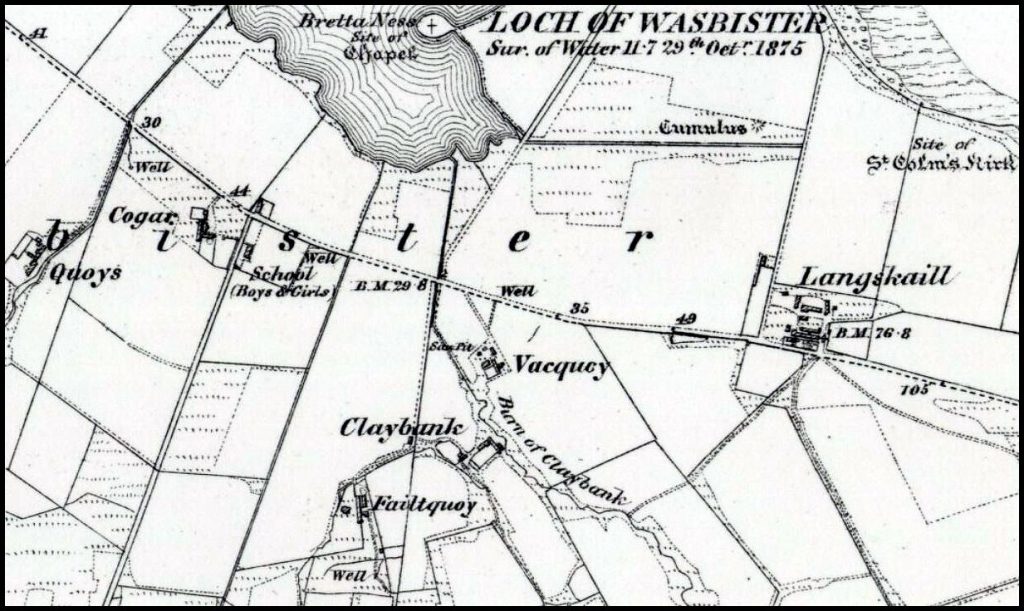
By 1891 Alexander was 82 years old and had retired. His son James had taken over as head of the household, living there with his wife Janet Sinclair. They were married on April 15th 1870, and between 1872 and 1891 they had seven children; Annabella was born on June 7th 1872 at Feolquoy (she was to marry James Clouston of Tou, and have two children, James and Clara); John, born on March 30th 1875 at the Old School in Wester (he married Ann Russell of Brendale in 1902, and they had eight children, including Johnny, Cissie, Alice and Sally. John farmed the Glebe before moving to Furse); Jessie Alexina, born on April 25th 1879 at the Old School (she married John Craigie of Cruar. She was aged 101 years of age when she died); Clara, born on August 30th 1881 at the Old School (she married Hugh Pearson of Kirkgate and went to live in Canada); James, born on April 13th 1884 at the Old School (he married Maggie Ann Lyon of Ervadale and had three children, James, George and Sinclair); Sarah, born on April 30th 1886 (she married William Costie, a postman in Kirkwall, in 1914. They ran the tennis courts and billiards room in Main Street for many years); and finally Alice, who was born on December 10th 1891 at Feolquoy (she married Hugh Mainland of Weyland, later Hurtiso, in 1912. They had seven children).
[All black and white pictures courtesy of Tommy Gibson]
